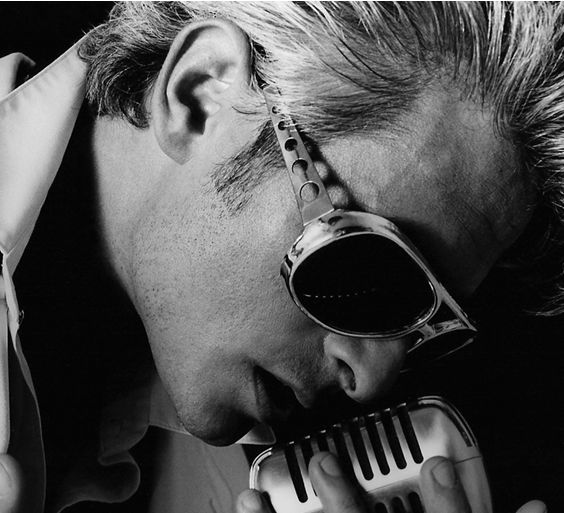
This is the same photograph but enlarged. You can see how much detail and texture there is in this photograph and how grain is not visible.
We also need to consider that when we enlarge photographs, grain will be more apparent. If we shoot the same image using two different camera formats, for example 35mm and 6 x 6 (medium format), the image of the smaller format camera (35 mm) will show more grain than the result shot with the larger format (6 x 6).
In the case of digital photographs, we need to be careful with the ISO we are using. When we use a high film speed, we begin to get "noise". As we mentioned in the first course, "noise" happens when a certain part of the image, which should have a flat colour, has dots with different colours. "Noise" results in a loss of quality in the image, which is something we want to avoid (see the example on "noise" in the previous course). The higher the film speed we use, the more noise our image will have.
Cameras change and improve as time goes by. Nowadays, there are some excellent DSRL cameras which produce very little "noise" whenever we are using high film speeds. Digital cameras that have a larger sensor, such as many DSLR, allow you to shoot at higher film speeds without "noise". In the case of compact digital cameras, since they use a smaller sensor, noise will be apparent even when using ISO 400. There are several software programs, such as Neat Image and Noise Ninja, which you can use to reduce "noise" in photographs.
Film speed will also influence in the contrast of a photograph. Contrast is the difference between the part of an image with dark colours or tones and those parts with light colours, or between bright areas and areas with shadows. A black and white photograph with no intermediate gray tones has a very high contrast. On the other hand, a photograph only in gray scales (no black nor white) is a photograph with low contrast.
If we take 2 photographs of the same image, using ISO 100 on the first and ISO 1600 on the second one, the first photograph (ISO 100) will have a little more contrast than the second one (ISO 1600). Therefore, the higher the film speed we are using is, the less contrast it will have.
So, how do we decide on what ISO to use? The first thing we need to do is notice how much light there is and what type of light it is. If we are shooting pictures under plenty of natural light (sun), we need to use a low film speed (ISO 100); unless we are using film and we want grain on the image.
If we are shooting pictures in places with little light, indoors, a church, a concert, etc, we need to test which the lower film speed I can use for a proper exposure is. It is a good idea to start with ISO 100 or ISO 200 and see how the picture comes out. If it is too dark, we increase the film speed until we find the right one. Never begin with a high film speed, such as 1600 or 3200, because, as you remember, these setting produce the undesirable "noise". Don't shoot these types of pictures using ISO 1600 when you could have used ISO 800 or ISO 400 (this would have rendered a better quality).
All of this does not mean we can't use high film speeds. If there isn't enough light and the options are: not taking the photograph because we don't want to increase the film speed, or increasing the film speed and taking the photograph, please increase the film speed. It is always better to get the photograph than having nothing!
The best idea is to try your own camera in different light situations using different film speeds to notice the results we get. This way, we will get to know our own equipment better and know the options we have available.

